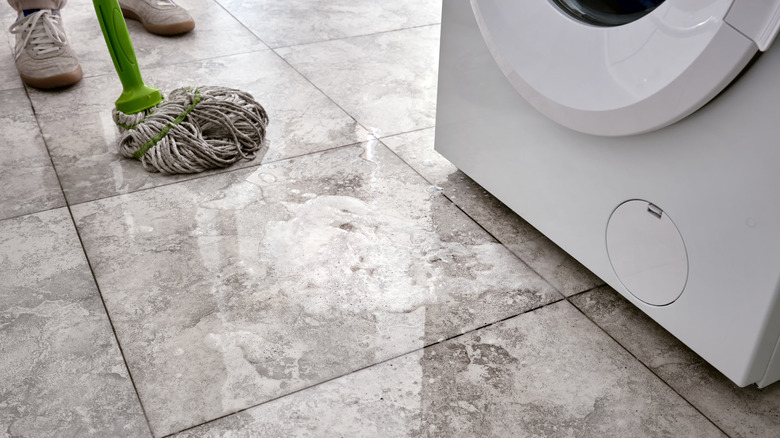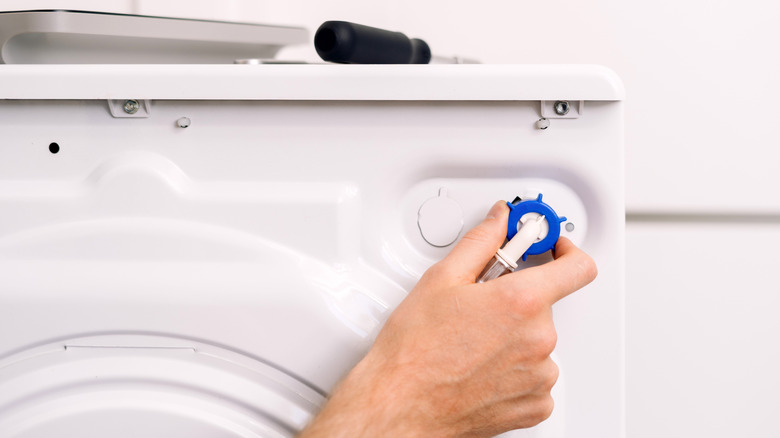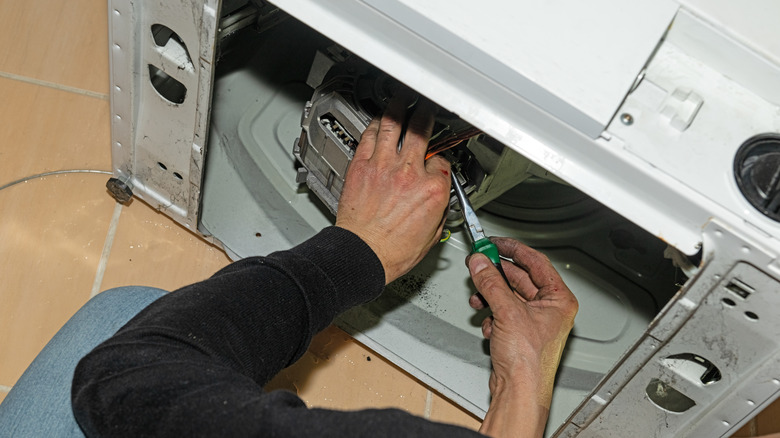Washing Machine Leaking? The First Thing To Do (Before Calling A Plumber)
Finding water on the laundry room floor is a stressful moment that leaves you worried about water damage and costly repairs. Unfortunately, washing machines are among the household appliances that are most likely to break down. The good news is that many problems, such as leaks, can be easily repaired without replacing the machine. Since the cost of repairing a leaking washing machine can range from $75 to $200 or more if diagnostic or emergency repair fees are charged, it's worth trying to fix the problem yourself before calling in a professional.
The first thing to do before calling a plumber is to check the external and internal fill and drain hoses. Other common causes of leaking problems in washing machines include drain pumps, problems with the water inlet valve, pressure switch, or detergent dispenser. One of the common laundry mistakes that can cause leaks is using too much detergent. This can lead to excessive suds and buildup, which can sometimes result in leakages. Before inspecting your machine to locate the source of a leak, be sure to turn off the water supply and unplug the washing machine.
Inspect the machine's external and internal hoses for a possible leak
Some common reasons why your washing machine may be leaking include issues with the fill and drain hoses. These are some of the easiest problems to locate and repair, so check there first. Hose leaks are often caused by damage to the hose, a blockage, or the hose may have come loose at the back of the machine. Once you locate the issue, you can easily fix it by removing the blockage, reconnecting the hose, or replacing a damaged one.
When checking the external hoses, start with the connections for the fill and drain lines. These can become loose due to the vibrations when the machine is running. If you notice the lines are loose, tightening them should stop the leak. Next, check the rubber washer that sits in the fill hose, and if it has become damaged, replace it. Visually inspect the length of the hose for damage or holes.
If the external hoses are properly connected and not damaged, check the internal hoses. You'll need to remove the back panel to check the internal fill hoses and tub-to-pump hose. Carefully check the hoses for signs of corrosion, tears, or cracks. Check the connections to see if anything is loose and inspect the clamps to make sure they are not loose, damaged, or rusted.
How to check for other common leak sources
If you've noticed that the machine appears to be leaking during the draining process, the problem may be with the drain pump. A drain pump can be damaged due to normal wear and tear over the years or when an object enters the pump through the filters. If the pump is damaged or faulty, it may need to be replaced.
A washing machine that is unbalanced and not level may leak. You can easily check this by placing a level on top of the machine and leveling it out. If you've checked all of these things and still have not found the problem, the next thing to check is the water inlet valve. The valve connects to the hot and cold-water hoses and will leak even when the washer is not running. The problem with these valves is that often debris accumulates inside them, and cleaning them out may be enough to solve the problem. If the leak continues after cleaning, you may need to replace them.
There are other potential causes of washing machine leaks, such as a faulty door seal in front-loading washing machines or a problem with the pressure switch. These issues are more difficult to repair, so you may need to call a professional to handle the job for you. While you will have to pay for the repair, the good news is that these problems are usually fixable, and you won't need to replace the machine.


